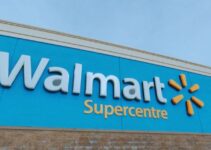JCPenney is a retail chain departmental store American multinational company. William Henry McManus and James Cash Penney founded the retail store company in 1902. Today, we’ll discuss the value chain analysis of JCPenney supply chain analysis; primary and supporting activities in the process of value chain analysis Example Company. They are inbound and outbound logistics, operations, marketing, and customer service; infrastructure, HRM, technology, and procurement as an application of the value chain analysis process.
Suppliers Manufacturing Countries of JCPenney
- Bangladesh
- India
- China
- Vietnam
- Saipan
The Value chain analysis of JCPenney supply chain analysis would analyze the primary and supporting activities in the process of value chain analysis. They’re inbound and outbound logistics, operations, marketing, and services; infrastructure, HRM, technology, and procurement. Here’s supply chain analysis of JCPenney value chain analysis company example as follows;
Value Chain Analysis of JCPenney
Let’s discuss the primary and supporting activities involved in the process of value chain analysis of JCPenney supply chain analysis. It is an application of value chain analysis based on Porter’s model; some of the key elements and components of value chain analysis are as follows;
Primary Activities of JCPenney
The primary activities are directly involved in the production of products and goods and adding value to the company. Some of the five main primary activities in the value chain analysis of JCPenney supply chain analysis are as follows;
Inbound Logistics of JCPenney
I-Large Suppliers Network
JCPenney has established a very large network of suppliers in countries like India, Bangladesh, Vietnam, China, and Saipan. The large supplier network in developing countries helps the company to decrease the per-unit production cost and gain a cost advantage. Some of the main suppliers and production companies of JCPenney are as follows;
- Reliable Knitting works
- Freeze
- Bre Industries
- Apex Maritime
- Romeo Juliette
- JCPenney Purchasing Corporations
Some of the main private labels and brands that work and operate under JCPenney are as follows;
- Worthington
- Okie Dokie
- Stafford
- Liz Claiborne
II-Suppliers Regulations
JCPenney partners up and collaborates with suppliers that comply with the legal requirements of the company and the local government. Some of the main legal requirements of the retail chain store brand are as follows;
- Accurate labeling of the origin of the country
- No child and forced labor
- Having manufacturing certification
- Visiting the supplier’s factories to ensure compliance with laws and regulations
- Taking a corrective course of action in case of non-compliance
Outbound Logistics of JCPenney
I-Transportation & Distribution
JCPenney partners up with various 3rd party logistics service providers for the transportation and distribution of products and goods. They move goods from the production facilities to the warehouses and distribution centers, and retail stores to the end customers. For distributing goods to the end customers, JCPenney collaborates with UPS.
II-Retail Logistics Centers
JCPenney employs 436000 square feet size of RLC (retail logistics center); it uses 20,000 feet of conveyors and a 938-foot long single-unit showstoration system to manage and process 165000 cartons daily. They have an accuracy and precision of 99.9% without any disruption and gaps.
III-Data Analysis
The data analysis system of the retail chain brand JCPenney supports the management in the decision-making process. It also helps the company in finding the best location to ship products and goods relevant to satisfying the customers’ demands; the company’s goals, and the online shipping speed.
Operations of JCPenney
I-Warehouses & Distribution Centers
JCPenney has established a network of 11 warehouses, supply chains, and distribution centers in various regions and countries across the world. The company built them in precise locations in various geographical regions in proximity to the retail chain stores. It allows the company to distribute the required products and goods to the stores in the shortest possible time at the lowest cost.
Marketing & Sales of JCPenney
I-Marketing & Advertisement
JCPenney employs various media channels for marketing and advertisement of its products, private labels, and brands. Utilizing multiple media channels helps the company to approach the mass audience and target various segments of the target market.
II-Sales & Customer Relationship
The retail chain brand also runs various types of promotional campaigns like fair and square pricing to attract the attention of customers. However, such types of promotional campaigns help the company to sell the maximum stock and inventory. However, it decreases the company’s brand value as a low-quality and value brand.
Services of JCPenney
JCPenney offers various services to the customers to improve the customer shopping experience. They are like online shopping, home delivery service, picking at the store, tracking customers’ orders, and returning shipments. However, some of the main services of JCPenney are as follows;
- Daycare
- Wedding registries
- Home repair services
- Salons
- Boutiques services
Supporting Activities of JCPenney
Supporting activities are indirectly involved in the production of products and goods and adding value to the company. Some of the main supporting activities in the value chain analysis of JCPenney supply chain analysis are as follows;
Infrastructure of JCPenney
JCPenney has established a very large infrastructure of 663 stores; warehouses and distribution centers, production and manufacturing facilities, and a supply chain network. The worldwide infrastructure helps the retail chain store brand to smoothly perform its various operations and deliver the products and goods to the end consumers with limited or no disruptions.
HRM of JCPenney
JCPenney has employed over 60,000 employees to manage its retail and supply chain operations. The human resource management department of the company plays a key role in building a safe working environment; offering equal employment opportunities, and fair treatment of workers in suppliers manufacturing factories.
Technological Development of JCPenney
JCPenney invests a significant amount of capital resources in research and development for employing robotic technology in its warehouses and analytical systems for efficient decision-making. The latest technological tools, equipment, and systems help the company to smoothly perform its operations with limited wastage and efficient utilization of resources.
Procurement of JCPenney
JCPenney is various careful and cautious about ethical sources and procurement of products and goods. In fact, the retail chain store brand has set up clear regulations and standards for suppliers to ensure high quality goods for customers.
Conclusion: JCPenney Value Chain Analysis Example Company | Application of Value Chain Analysis Process
After an in-depth study of the value chain analysis of JCPenney; we have realized that JCPenney is the world’s leading retail chain departmental store company. If you are learning about the JCPenney value chain analysis example company; then you should keep in mind the abovementioned primary and supporting activities. They’re inbound and outbound logistics; operations, marketing and sales, and services; infrastructure, procurement, HRM, and technological development as an application of the value chain analysis process.
Ahsan is an accomplished researcher and has a deep insight in worldly life affairs. He goes Live 3 days a week on various social media platforms. Other than research writing, he’s a very interesting person.


